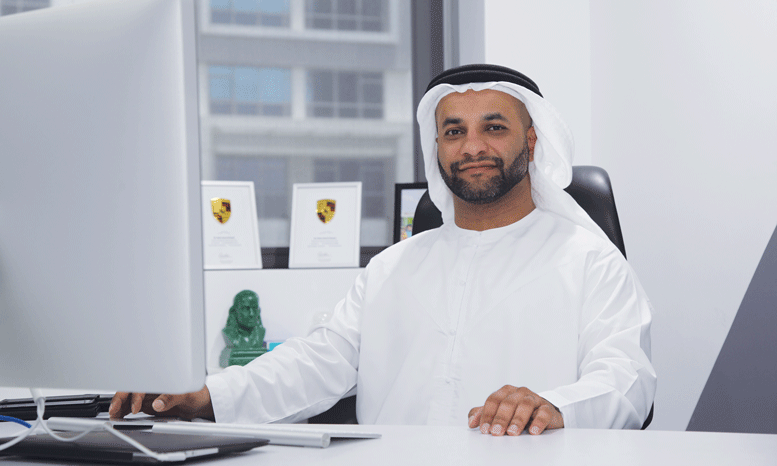Dubai’s Energy Solutions Group International: Going green in the built environment
Big Project ME speaks to the leadership team at ESGI, which is trying to change the way the UAE looks at building performance and energy efficiency

With the increase in energy prices now becoming an accepted reality in the GCC states, there has been a steady but undeniable gravitation towards exploring energy efficiency and sustainability in the built environment across the region.
These efforts have only increased following the COP21 summit in Paris last year, particularly in the UAE, whose government has pledged to embrace green building and sustainability across the board. Dubai has been particularly active in this regard, with the emirate’s government and municipality introducing mandates to encourage developers and building owners to build green, among a host of other efforts.
One initiative recently introduced is the Dubai Municipality green ratings system. Known as Al Sa’fat, the system is designed to strengthen the sustainable built environment in Dubai, while also supporting the goals of the Dubai Plan 2021, which aims to create a smart and sustainable city. The municipality has also said that it may consider pegging rents to green building ratings, thereby allowing owners with more efficient ratings to charge tenants higher fees.
It’s no surprise that a number of companies, from giant multinationals to SMEs and smaller regional players, are looking quite seriously into the energy efficiency of their buildings. However, one of the key misconceptions about this topic is that it is expensive and complicated to implement and maintain. When talking to the uninitiated, it’s clear that a lack of understanding is a major obstacle to the implementation of energy efficiency methods in the region.
This is where Energy Solutions Group International (ESGI) enters the fray. Having only begun operations in Dubai in 2013, the company has come a long way. Now established as an intelligent solutions provider that optimises energy use in commercial and residential buildings, the company is on a mission to educate and inform the market about how its intelligent building management systems are an unobtrusive, uncomplicated and inexpensive way to achieve energy efficiency in their buildings.
“Before this, I had a company installing energy automation systems in villas or smart homes in Dubai and Abu Dhabi. This progressed into looking at wider building management systems [BMS] solutions, from which ESGI was born,” relates Hatem Saeed Al Amoudi, CEO and founder.
“Our cornerstone client back then was Etihad Airways. We were initially approached to help the business develop a global standard for the internal environment (lighting, heating and cooling) within its First and Business Class lounges. Having worked to set the standardised performance criteria, we initially outsourced the application performance monitoring of these standards to a company in the UK. However, we quickly realised that we could replicate that service and made the decision to invest in our own 24/7 command centre at our headquarters in Dubai.”
This command centre is an impressive set-up, with live feeds of ESGI’s clients allowing the team to gather real-time information that allows them to assess the overall energy performance of the assets and relay them to clients.
“These dashboards provide our clients with the ability, in real time, to see at a glance the overall energy performance of their assets,” Al Amoudi says. “This is really the heart of our business. We provide clients with the ability to understand how their buildings truly function – where, when and why energy is being consumed, and the impact relatively simple changes in energy consumption can have on the bottom line profitability of the business.”
Using this visualisation approach towards educating clients is a conscious decision that ESGI has taken, Al Amoudi explains. When the company was first established, he used to guarantee clients that they could reduce energy consumption and lower costs. Now he finds that letting clients see the data for themselves is far more effective than any guarantee.
“At the proof of concept stage, we now simply plot a client’s actual energy consumption in any given month against their business hours and allow them to become their own energy engineer. When you see data this way, clients immediately identify the issues, and we regularly hear comments such as ‘Why is my HVAC running 24/7, but my office works a 40-hour week?’ or ‘Why are the car park lights on during the day?’”
Paul Warren, director at ESGI, chimes in at this point to add that the company’s primary objective has shifted from saving energy to educating clients about how their systems are currently functioning and where the problems lie.
“Once they have this data, they can usually identify the steps they need to take, without any further intervention from us. Clients in this region really understand the costs of running their businesses, and as soon as they can see excessive costs, they quickly take action.”
This sort of success only really came about for ESGI when the company was introduced to a fascinating piece of technology from Dell. The Dell Edge Gateways for IoT is a powerful piece of kit that connects wired and wireless devices and systems, allowing them to talk to each other while it aggregates and analyses the input before sending it on to the command centre.
Warren is adamant that ESGI wouldn’t be where it is today without this piece of kit.
“Due to our existing relationship with Dell, we were given access to an advanced prototype and we immediately saw its potential within the BMS industry. Traditionally, any building such as an office block, school or shopping mall operates an independent BMS or control system for each element of its environmental infrastructure [HVAC, lighting, heating, etc]. These systems generally function in silos and are usually locked to the specific installation vendor. However, we saw that by using specialist software developed by our team in Dubai, we could use the Gateway to sit above the existing BMS and relay data back to us on how the individual systems operate and perform. Armed with this insight into the building, we could supply some control and optimisation techniques to drive either energy saving or building efficiencies.”
Highlighting just how effective the Gateway is, he says the company recently undertook a proof of concept for a shopping mall in Dubai, which showcased promising results.
“We installed the IoT Gateway and a variety of wireless sensors – the whole installation and visualisation process took about a week. The results were outstanding. Remember, this is a relatively new mall, with a fully commissioned and managed BMS.
“There were two siloed control systems, each working on different vendor locked protocols, neither of which were adjusted to the actual environment demands inside the mall or the outside temperature, the lighting system didn’t take into account the time of day, and the chillers weren’t operating correctly – the list went on and on.
“However, because everything worked independently, with its own protocols and servicing teams, management were never really able to capture the overall energy performance of the building or where their energy spend was going. Using the Gateway and our own operating platforms, we were able to do this for them in a week and show estimated annual saving of up to $2.45 million a year.”
Results like this show just how crucial it is for energy management in the UAE to take off. COO Andrew Ward points out that energy management is one of the big strategic issues currently facing the UAE, given the unprecedented population growth and development over the last decade or so.
“Just think about it – in 2006 you probably had a small Nokia phone and, if you were lucky, a laptop that you rarely took away from your desk because it weighed so much. Fast forward to 2016, and you’re likely to have one, maybe two smartphones, a laptop that comes everywhere with you, an iPad, a Kindle, a smart watch or wearable – the list goes on and on. Multiply this by the forecast population growth, the new hotels, housing estates and theme parks, and you can quickly see how we will need 140 terawatts of energy by 2020.
“There are two ways in which the UAE can meet this demand. From a supply side, it can invest into increased energy production like we have seen with the Mohamad Al Bin Rashid Solar Park; or it can use better demand side management tools. Here in the UAE, we sit firmly in this demand side box, helping individuals, business and government understand how relatively simple changes in consumption patterns can dramatically reduce overall demand,” Ward explains.
Hatem Al Amoudi adds that over the years he has consistently encountered organisations and companies exhibiting no understanding of where, when or how they’re consuming energy. Until they realise the economic costs, he says, there’s likely to be little incentive to change. This unsustainable attitude makes it vital that technology like Dell’s Gateway bridge the gap between consumption and understanding.
“Our clients really like the way we visualise their energy consumption for them, but from our perspective, what is really exciting is when we use the platform to control how a building automatically responds to changes in demand,” says Ward. “Remember, the Gateway is an IoT solution which can receive and send data to any connectable device; by overlaying our platform, we can leverage the level of value that we can provide.”
“Our role is to work with management to understand the environmental protocols within each space [lighting, cooling, hot water, etc]. Then, by using wireless sensor technology or smart tags to collect data, we can use our platform to automatically control the building’s environmental infrastructure to respond to real-time utilisation of the space. As a result, we can optimise energy consumption to meet specific demand.
“All this data can be relayed to our command centre in Dubai, where if there is a fault or alarm, we can either reset the system remotely or guide the on-site team to resolve the problem.”
The applications for the technology are endless, adds Hatem, pointing out that the Gateway can be used to pull data from a hotel room booking system into ESGI’s platform, giving hotel management the ability to allocate guests to rooms in one wing or block where potentially only one chiller unit is required.
“The same process can also be used for a shopping mall. Here we can feed national holidays or events into the HVAC or lighting automation. This way, the building knows when there is going to be a significant increase in demand and can adjust its energy performance automatically,” he explains.
Given the number of green initiatives being established across the UAE, Al Amoudi, Warren and Ward are all keen to stress that the next step has to be enforcement, which will be a key challenge for the government.
“From our perspective, there needs to be an independent body which is responsible for measurement and verification,” says Paul Warren. “The market needs an increased level of sophistication in how it measures and validates energy consumption.”
“To be really effective, though, government has to enforce these standards, and ultimately that has to be through a series of financial incentives,” adds Ward. “If rents or municipality fees were linked to the energy performance of buildings, then we would see real change overnight. Historically energy has been cheap, and this has been a huge disincentive for either the consumer to conserve energy or for developers to invest into energy efficient design. If energy was to become a significant cost, either through an increase in $/kWh or by limiting income into the business, this would result in an enormous shift in the mentality of the market.”
The final word goes to Hatem Saeed Al Amoudi. Having worked tirelessly to establish ESGI, he says it is now time for the government to provide a benchmark for the market to comply with.
“We are able to assist on this from both perspectives. All the data we visualise is verifiable via the smart meters we install. It is then all logged and stored within our network. At the end of the verification period, we can plot this data against external factors such as weather or footfall and conclusively prove, even if overall energy consumption has increased, how energy efficiency on a per head or per opening hour basis has actually improved.
“It has been a frantic three years, but we are now really looking forward to expanding across the region and really changing the future of the energy market.”
























